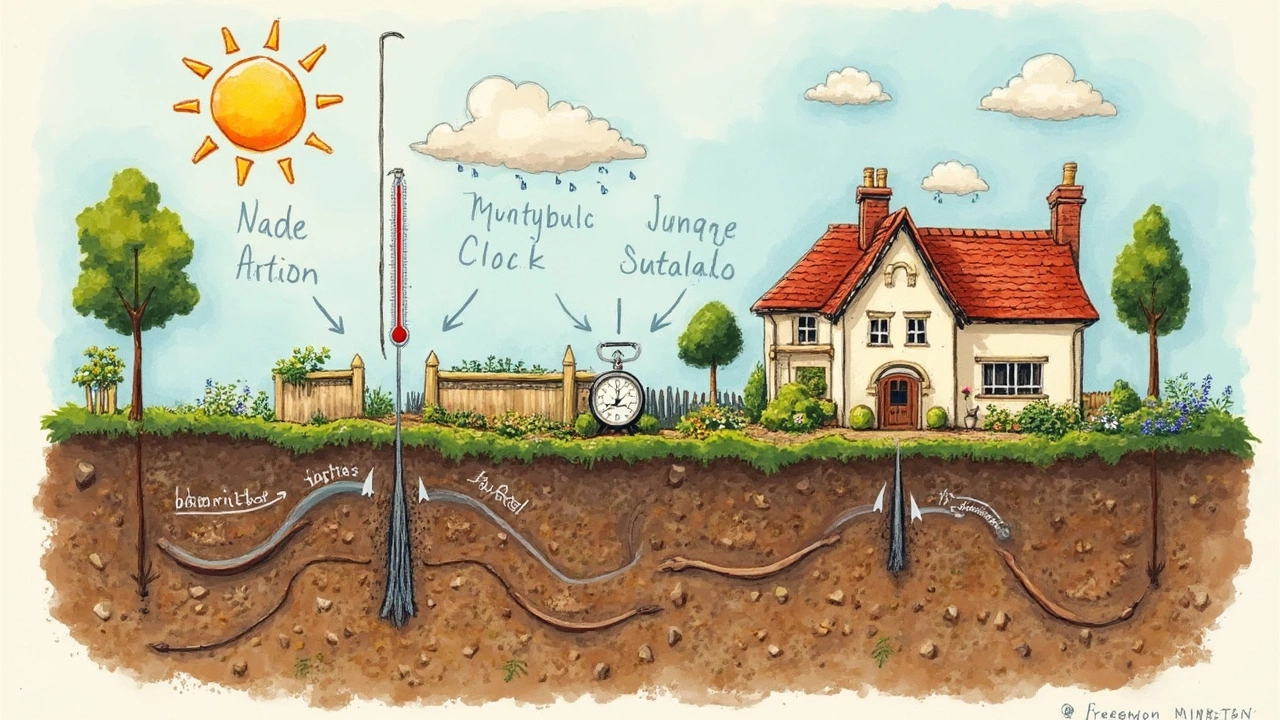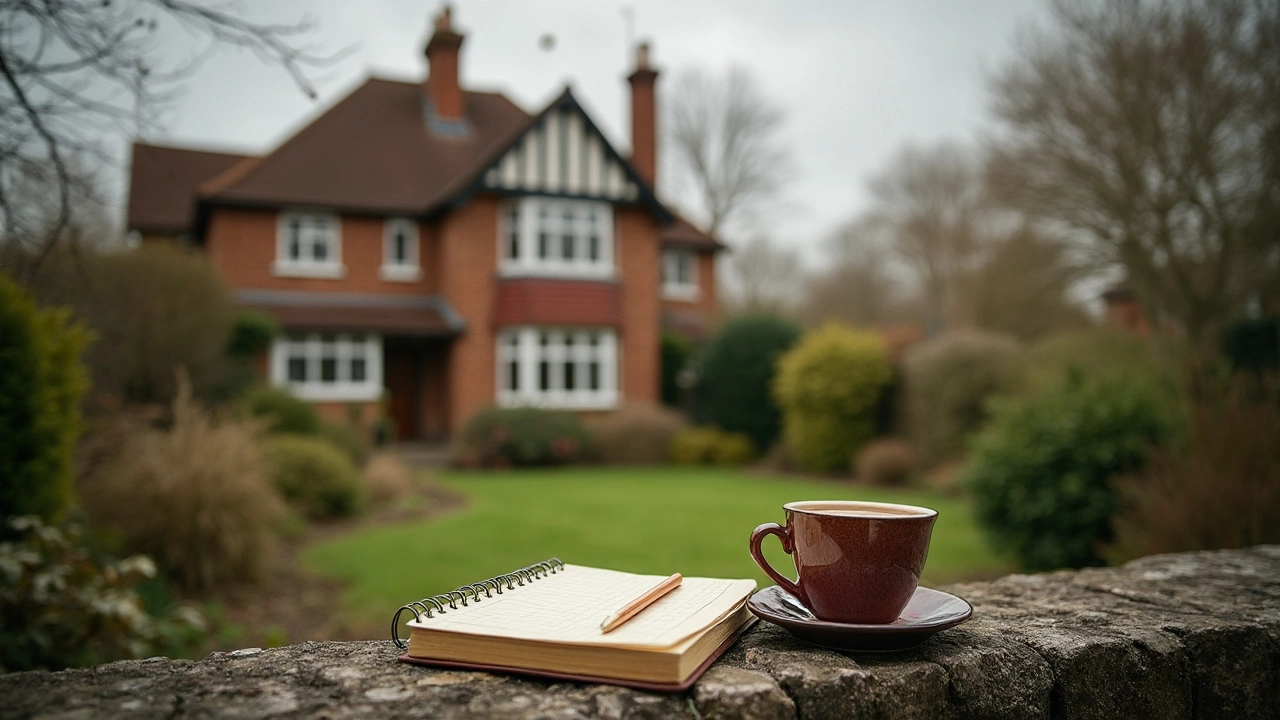Foundation issues don’t wait for a convenient season, but the time of year really does matter when you want the job done right. Sure, you can fix a foundation in any month, but you won’t get the same results in the sweltering heat as you would during mild temps. Why? Because soil expands and contracts with moisture and temperature changes—it’s kind of like a stubborn old garden hose that won’t coil the same way in winter.
Most homeowners don’t think about this stuff until cracks show up or doors start sticking. That’s when every contractor in town suddenly gets booked. But if you know how weather swings mess with your foundation and plan accordingly, you can dodge rush fees and maybe even lock in a better deal. No need for guesswork—I’ll break down exactly what to expect as the seasons change so you won’t get caught off guard.
- How Weather Shapes Foundation Repairs
- Spring: A Double-Edged Sword
- Summer: Dryness and Soil Shifts
- Fall: The Sweet Spot for Repairs
- Winter: Risks and Realities
How Weather Shapes Foundation Repairs
Think your foundation just sits there, minding its own business? Not a chance. It reacts to weather like a cranky toddler. The biggest troublemaker is moisture—either too much or not enough. When the soil around your house gets soaked from heavy rain or snowmelt, it swells up. But a dry spell pulls that moisture right back out, and the ground shrinks like a sponge that's lost all its water.
Here’s the kicker: those ups and downs can move your foundation enough to cause cracks, slopes, or sticking doors and windows. Some soils—especially clay-heavy ones—are way worse than others for expanding and shrinking. If you live in Texas, Georgia, or the Midwest, you probably already know how rough it can get after a rainy or hot summer.
Temperature isn’t off the hook either. Concrete actually cures best around 50°F to 70°F (10°C to 21°C). Too hot, and it dries too fast—too cold, and it might not set right at all or could even freeze. Ever seen a sidewalk poured in the dead of winter? That’s trouble waiting to happen.
Let’s look at some basics:
| Weather Factor | Effect on Foundation/Repairs |
|---|---|
| Heavy Rain | Soil swells, puts extra pressure on foundation walls, can cause leaks and cracks |
| Drought/Extreme Heat | Soil shrinks, foundation may settle unevenly, more cracks show up |
| Freezing Temps | Concrete cure slows down, risk of cracks from freeze/thaw cycles, repairs may not bond well |
| Mild Temperatures | Stable curing, easier to dig and work, strongest long-term repairs |
Timing your foundation repair isn’t just about convenience; it’s about getting the strongest fix. If you call in a contractor during an extreme weather swing, you might be dealing with extra costs or do-over work down the road. Bottom line: pay attention to the weather before booking that repair crew. Your future self (and your wallet) will thank you.
Spring: A Double-Edged Sword
Spring seems like a fresh start, but when it comes to foundation repair, it’s not always the perfect season. All that snow melting and rain pouring down means the ground around your home is soaking up a lot of water. That extra moisture makes the soil expand and get all mushy, which can shift your foundation. This is when cracks suddenly show up or old ones start to grow.
But here’s the catch: while spring reveals foundation problems you might not have noticed in drier months, it’s also the trickiest time for repairs. Wet soil is unpredictable. If crews try to stabilize or lift your foundation while the ground is extra soft, things might settle in a weird way once things dry out. That can mean rework or new cracks later on.
- Waterlogged soil can hide deeper issues, so some repair companies will want to wait until things dry a bit.
- Access to the foundation is tough when the ground is muddy. Heavy equipment can tear up your yard and slow things down.
- The rush of people noticing problems after winter often means higher prices and longer waits for appointments.
If you spot a serious issue, don’t ignore it—sometimes waiting isn’t an option. But if the problem isn’t an emergency, ask your contractor to check how saturated the soil is first. They might suggest starting work after the ground firms up, which could help repairs last longer and save you money in the long run.

Summer: Dryness and Soil Shifts
Summer sounds great for outdoor work, but it actually brings some big headaches for foundation repair. When the temperature jumps, especially in areas like Texas or the Midwest, the soil dries out fast. Dry soil shrinks and pulls away from your home’s foundation, leaving gaps. If you spot cracks appearing faster in July than in March, you’re not imagining things—there’s real science behind it.
Soil that’s packed tightly in the wetter months gets loose and crumbly as summer goes on. This makes the house settle differently than it did in spring or fall, which makes everything unpredictable for repair crews. Slab foundations are especially at risk, but even pier-and-beam setups can shift with major temperature swings.
| Summer Factor | Effect on Foundation |
|---|---|
| Soil Moisture Loss | Causes soil shrinkage; leads to cracks and gaps. |
| Heat Waves | Speeds up soil movement; adds stress to foundation. |
| Sudden Rain After Drought | Soil quickly expands; can cause uplift or more cracks. |
Here's what most contractors won’t tell you: fixing a foundation when the ground is bone dry can sometimes make the repair less stable. The shrunken soil might puff back up during rainy months, putting stress on the repairs you just paid for. That doesn’t mean summer repairs can’t work—it just means you need a contractor who knows the deal with local soils and moisture cycles.
- Watering your foundation lightly but regularly during summer can help soil stay at a more stable moisture level.
- If you start repairs in summer, ask if your contractor will come back after fall rains to check for movement.
- Take extra care with sprinkler systems and drainage—water pooling in one area can make soil swell unevenly and undo good work.
The take-home message? Summer can be okay for foundation repair if you plan right, but it’s usually a tricky time. Watch the weather, keep an eye on your soil, and don’t skip the follow-up inspections when things cool down. That way, you’ll get more bang for your buck and fewer surprises a few months down the line.
Fall: The Sweet Spot for Repairs
Ask any seasoned contractor and they’ll tell you: fall is hands down one of the best times for foundation repair. The big reason? Soil is at its most predictable. After soaking up summer rain and heat, then slowly cooling back down, the ground settles into a steady moisture level. That means no wild shifts or surprise cracks from Mother Nature while repairs are happening.
Why does stable soil matter so much? When the ground is consistent, repair crews can accurately judge what the foundation needs. Piers go in smoother, concrete cures at just the right speed, and adjustments made now are less likely to shift out of place later. There’s less risk of a quick fix turning into a repeat headache.
Check out this quick breakdown of why fall works in your favor:
- The cooler air keeps concrete from drying too fast, which makes for tougher, longer-lasting repairs.
- You avoid heavy spring rain and summer drought—both of which mess with foundation settling.
- Many contractors have fewer emergency calls in fall, so you’re less likely to get rushed workmanship.
Here’s a look at how fall measures up for repair success:
| Season | Soil Stability | Concrete Curing | Contractor Availability | Surprise Weather Delays |
|---|---|---|---|---|
| Spring | Low-Medium | Medium | Low | High |
| Summer | Low | Poor (too fast) | Medium | Medium |
| Fall | High | Optimal | High | Low |
| Winter | Variable (can freeze) | Poor (can freeze) | Medium | Medium |
If you want fewer surprises and repairs that actually last, aim for fall. Just don’t wait until freezing cold snaps hit—late September through early November is usually the sweet spot in most parts of the U.S. A quick tip: book early if you can, since good contractors fill up fast once word gets out that now’s the best time.

Winter: Risks and Realities
When winter hits, foundation repair gets trickier—not impossible, but definitely not ideal for most homes. Let’s start with the most obvious challenge: freezing temperatures. Most repair materials just don’t play nice with the cold. Concrete, for example, cures way slower if the mercury drops below 40°F, and if it freezes before it sets, you’ll get weak, cracked patches. Nobody wants to fix their foundation twice.
Winter weather also dries out soil, especially in places where you get those cold, windy days. Dry soil pulls away from your foundation, which can cause even more shifting and make existing cracks worse. Pros have to fight with hard, frozen ground, which slows down digging and might require using heaters or thawing equipment—raising the price and sometimes slowing the whole process.
If water sneaks into cracks or small gaps and then freezes, it expands. That’s called frost heave, and it can shift your foundation even more during the repair process. You end up with new problems while trying to fix the old ones. Here’s a quick rundown of winter repair headaches:
- Concrete and mortar slow to cure and might not set properly
- Frozen soil is harder (and pricier) to dig and work with
- Cold snaps cause soil to shrink, revealing new cracks
- Water freezing in gaps causes frost heave and extra shifting
- Scheduling is tough—most contractors take time off or work fewer hours
Not every winter job spells doom, though. If you absolutely need a foundation repair because your home is unsafe, good contractors can use tricks like heated enclosures, fast-setting mixes, or site heaters. But these fixes don’t come cheap. For most folks, it’s usually smarter to patch up leaks or keep water away from the problem areas until warmer weather.
| Winter Challenge | Impact on Repair |
|---|---|
| Frozen Soil | Slower and more expensive excavation |
| Slow Concrete Curing | Delays, weak bonds, higher failure risk |
| Frost Heave | New movement, extra cracks |
| Contractor Availability | Longer wait times and higher prices |
If you’re dealing with a foundation emergency in winter, it’s still worth getting a pro out for a look. But if it can wait, hold off until the freeze lets up. You’ll save on labor, get stronger results, and avoid a ton of headaches.

Author
Damon Blackwood
I'm a seasoned consultant in the services industry, focusing primarily on project management and operational efficiency. I have a passion for writing about construction trends, exploring innovative techniques, and the impact of technology on traditional building practices. My work involves collaborating with construction firms to optimize their operations, ensuring they meet the industry's evolving demands. Through my writing, I aim to educate and inspire professionals in the construction field, sharing valuable insights and practical advice to enhance their projects.